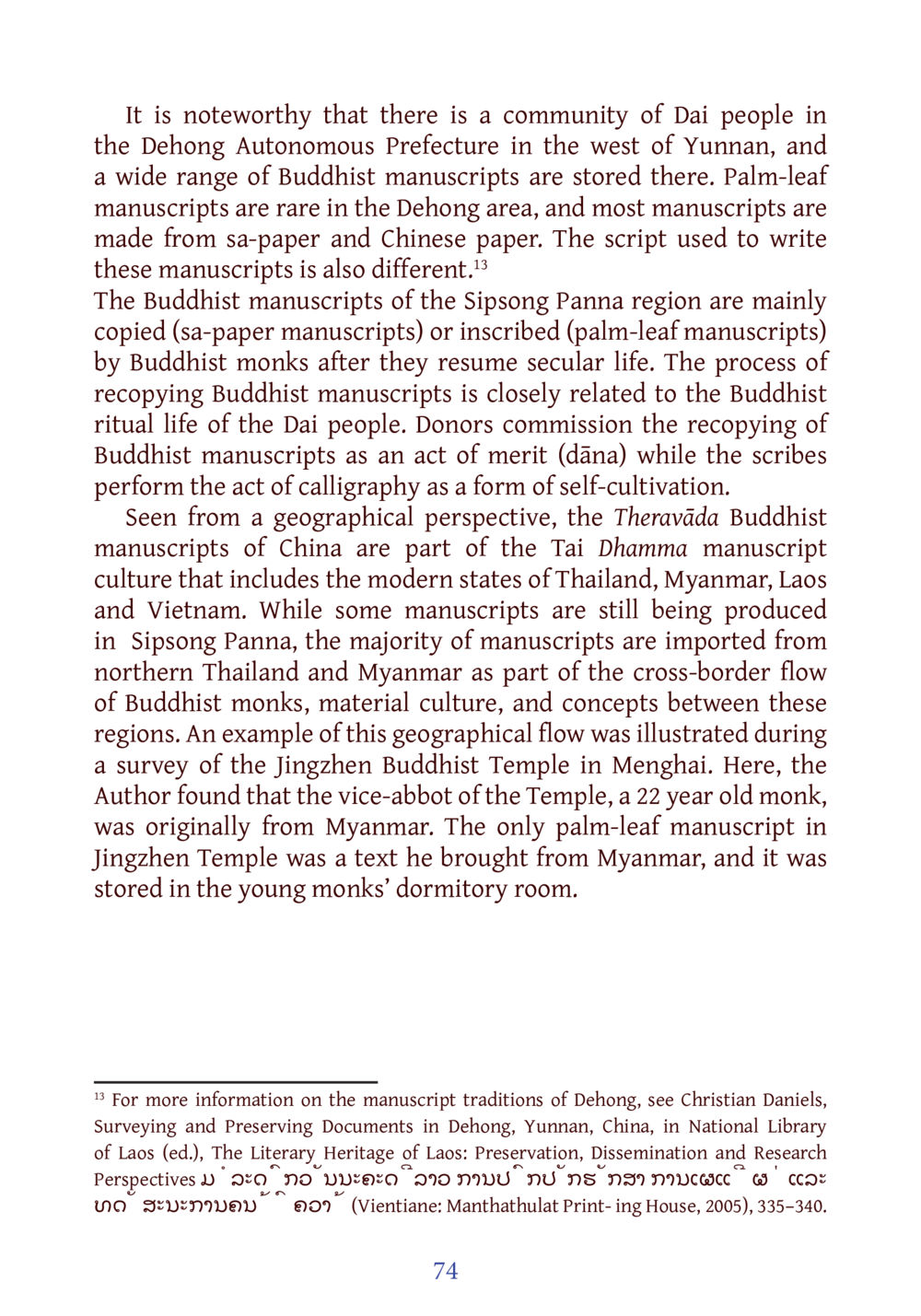Dai Buddhist Manuscripts in Yunnan's Dehong Prefecture : หน้า 95/141
DIRI Journal : หน้า 95/141 Explore the unique manuscript traditions of the Dai people in Dehong, Yunnan, highlighting the significance of Buddhist texts.
0 ครั้ง

สรุปเนื้อหา
This text discusses the unique tradition of Buddhist manuscripts among the Dai people in Dehong Autonomous Prefecture of Yunnan, where various types of manuscripts are produced. Most texts utilize sa-paper or Chinese paper, and the script varies. Manuscripts reflect the rich cultural practices of the Dai, as Buddhist monks play a key role in the copying process, which is tied to their spiritual practices. The geographical connection to other Southeast Asian nations is highlighted, emphasizing the cross-border flow of culture and resources. Instances such as the Jingzhen Temple illustrate the ongoing exchange of Buddhist texts, particularly between Myanmar and China, with the only palm-leaf manuscript there being brought by a young monk from Myanmar. For more information on the manuscript traditions of Dehong, visit dmc.tv.
หัวข้อประเด็น
-Dai Manuscript Traditions
-Buddhist Practices in Dehong
-Geographical Manuscript Flow
-Cultural Exchange in Southeast Asia
ข้อความต้นฉบับในหน้า
หน้าหนังสือทั้งหมด













































































































































